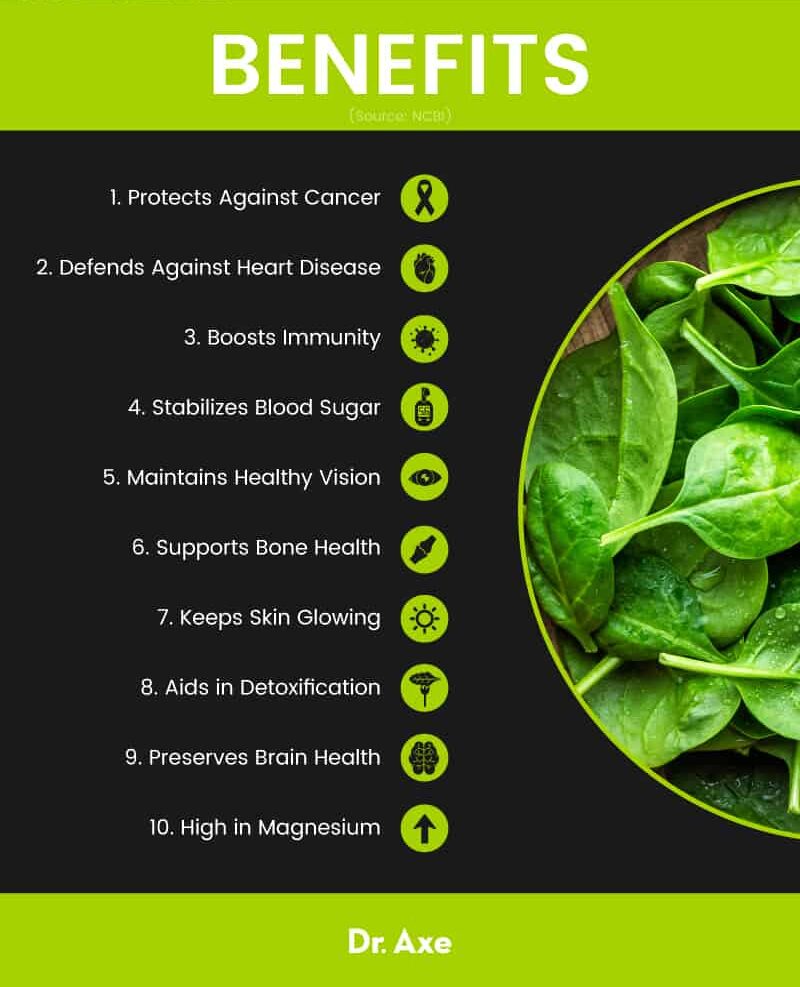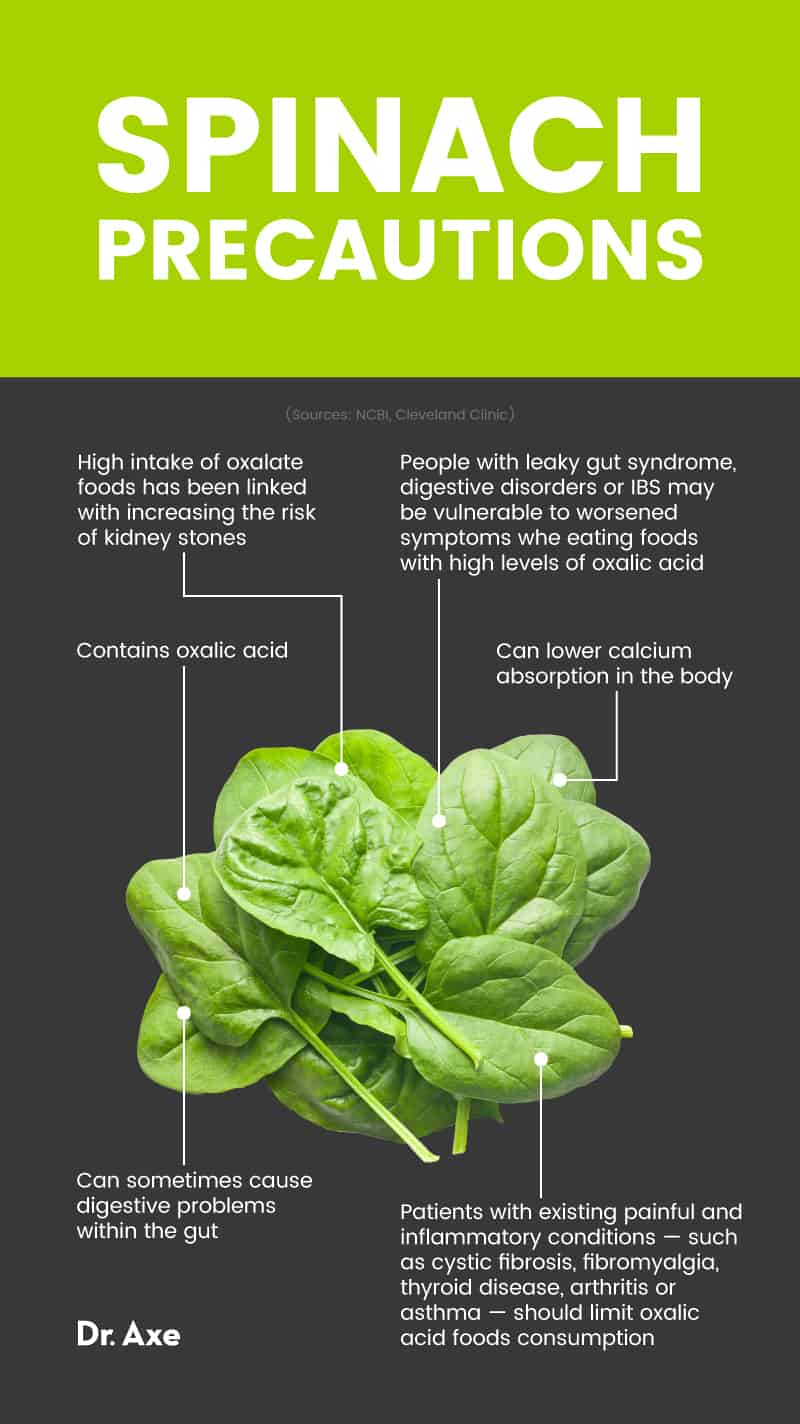This Dr. Axe content is medically reviewed or fact checked to ensure factually accurate information.
With strict editorial sourcing guidelines, we only link to academic research institutions, reputable media sites and, when research is available, medically peer-reviewed studies. Note that the numbers in parentheses (1, 2, etc.) are clickable links to these studies.
The information in our articles is NOT intended to replace a one-on-one relationship with a qualified health care professional and is not intended as medical advice.
This article is based on scientific evidence, written by experts and fact checked by our trained editorial staff. Note that the numbers in parentheses (1, 2, etc.) are clickable links to medically peer-reviewed studies.
Our team includes licensed nutritionists and dietitians, certified health education specialists, as well as certified strength and conditioning specialists, personal trainers and corrective exercise specialists. Our team aims to be not only thorough with its research, but also objective and unbiased.
The information in our articles is NOT intended to replace a one-on-one relationship with a qualified health care professional and is not intended as medical advice.
Spinach Nutrition: Vitamin K Powerhouse That Protects Bone, Eye, Brain & Heart Health
October 17, 2024

Spinach is considered to be one of the world’s healthiest foods, with researchers identifying more than a dozen different types of flavonoid antioxidants alone that are present in the leafy green, not to mention all of its other vitamins, minerals and essential nutrients. Spinach nutrition has powerful anti-inflammatory and antioxidant abilities, and if you combine that with its very low amount of calories, it is easily one of the most nutrient-rich foods in existence.
So what is it, how can it improve your health and how can you add this nutritious leafy green into your diet? Let’s explore all you need to know about spinach nutrition.
What is spinach?
The spinach plant is a vegetable that belongs to the Amaranthaceae family, which also includes other nutrient-rich plant foods, such as beets, Swiss chard and quinoa. Foods in this family have been shown to be helpful in protecting the central nervous system, reducing inflammation and delaying the aging process by protecting cells against damage.
Spinach contains special protective carotenoid compounds that have been linked with decreasing the risk of many diseases, including cancer, heart disease, diabetes, neurodegenerative conditions and obesity.
Spinach’s phytonutrients include such carotenoids as beta-carotene, lutein and zeaxanthin, the same kind of antioxidants found in the carrot, kale and broccoli nutrition profiles as well.
Spinach nutrition also supplies flavonoids, which are a type of powerful antioxidant that protect against disease by fighting free radical damage within the body. These protective compounds make spinach on of the best anti-aging foods available.
Aside from supplying high levels of antioxidants, spinach nutrition also offers an impressive amount of vitamins and minerals overall. It’s considered a nutrient-dense food, meaning there are very few calories in spinach, but it’s a good source of micronutrients like vitamin C, vitamin A, manganese, zinc and selenium.
This makes this vegetable useful in protecting various systems and functions within the body, boasting a long list of potential health benefits of spinach ranging from better eyesight to improved immune function.
Spinach nutrition facts
Spinach nutrition is rich in many important nutrients, including vitamin K, vitamin A, folate and vitamin C, yet contains a very small amount of calories in each serving. Additionally, although there are some carbs, it’s also very high in fiber, meaning it can help support regularity and keep blood sugar steady.
A one-cup serving of raw spinach (about 30 grams) contains approximately:
- Calories: 6.9
- Total Carbohydrates: 1.1 g
- Fiber: 0.7 g
- Sugar: 0.1 g
- Total Fat: 0.1 g
- Saturated Fat: 0.02 g
- Polyunsaturated Fat: 0.05 g
- Monounsaturated Fat: 0.003 g
- Trans Fat: 0 g
- Protein: 0.9 g
- Sodium: 23.7 mg (1% DV*)
- Vitamin K: 145 mcg (121% DV)
- Vitamin A: 141 mcg (16% DV)
- Folate: 58.2 mcg (15% DV)
- Manganese: 0.3 mg (13% DV)
- Vitamin C: 8.4 mg (9% DV)
- Magnesium: 23.7 mg (6% DV)
- Iron: 0.8 mg (4% DV)
*Daily Value: Percentages are based on a diet of 2,000 calories a day.
In addition to the nutrients listed above, raw spinach nutrition also contains some calcium, riboflavin, vitamin B6 and vitamin E.
For comparison, the cooked spinach nutrition profile contains a more concentrated amount of several nutrients. There is more fiber and protein in spinach that has been cooked, plus a higher amount of several vitamins and minerals, like vitamin K and vitamin A.
A one-cup serving of cooked spinach (approximately 180 grams) contains about:
- Calories: 41.4
- Total Carbohydrates: 6.8 g
- Fiber: 4.3 g
- Sugar: 0.8 g
- Total Fat: 0.5 g
- Saturated Fat: 0.1 g
- Polyunsaturated Fat: 0.2 g
- Monounsaturated Fat: 0.01 g
- Trans Fat: 0 g
- Protein: 5.4 g
- Sodium: 126 mg (5% DV*)
- Vitamin K: 889 mcg (741% DV)
- Vitamin A: 943 mcg (105% DV)
- Manganese: 1.7 mg (74% DV)
- Folate: 263 mcg (66% DV)
- Magnesium: 157 mg (37% DV)
- Iron: 6.4 mg (36% DV)
- Copper: 0.3 mg (33% DV)
- Riboflavin: 0.4 mg (31% DV)
- Vitamin E: 3.7 mg (25% DV)
- Vitamin B6: 0.4 mg (24% DV)
- Vitamin C: 17.6 mg (20% DV)
- Calcium: 245 mg (19% DV)
- Potassium: 839 mg (18% DV)
- Thiamine: 0.2 mg (17% DV)
- Phosphorus: 101 mg (8% DV)
*Daily Value: Percentages are based on a diet of 2,000 calories a day.
Cooked spinach nutrition also contains some zinc, niacin, sodium and selenium as well.
Additionally, it’s important to note that although spinach nutrition contains iron and calcium, these nutrients are not well-absorbed by the body. In fact, spinach is thought to be one of the least bioavailable food sources of calcium.
This is because this leafy green contains absorption-inhibiting substances, including high levels of oxalic acid. Oxalic acid molecules, also referred to as oxalates, are a type of antinutrient that bind to calcium and iron in the body and prevent the body from actually absorbing them.
High levels of oxalates are known to make iron and calcium far less absorbable, prevent their use and contribute to their excretion from the body through the urine.
In addition, spinach contains ecdysterone and even some turkesterone, which are good for building muscle and athletic performance.
Benefits
1. Protects against cancer
Studies show that consuming leafy green vegetables and cruciferous vegetables — including spinach, watercress, broccoli, cauliflower, cabbage, Brussels sprouts, mustard greens, turnip greens, collards and kale — can dramatically protect against the occurrence of various types of cancers, including colon, breast and prostate cancers.
Spinach is able to slow down cancerous cell formation because it defends against DNA damage and limits oxidative stress through the presence of antioxidants like neoxanthin and violaxanthin. These powerful carotenoids protect cells from mutations that can ultimately lead to cancerous tumor growth.
Spinach nutrition also contains both chloroplast and chlorophyll. Because of this, studies have found that spinach acts as a potent cancer-fighting food by pulling out carcinogenic substances from the body, detoxifying the body, reducing inflammation and slowing free radical damage.
2. Defends against heart disease
Thanks to its antioxidant content, spinach limits inflammation in the body, which is one of the main risk factors associated with the development of coronary heart disease. Studies show that it can protect heart health by enhancing the functions of nitric acid, which improves circulation, lowers blood pressure and promotes blood vessel health.
Spinach is also rich in many specific carotenoids that have been linked to decreased inflammation and chronic disease prevention.
Spinach nutrition is able to help with blood vessel-related problems, including atherosclerosis and high blood pressure. The protective compounds found in spinach work together to keep arteries clear of dangerous plaque buildup, lower cholesterol levels, fight high blood pressure, increase blood flow and maintain healthy, strong blood vessels.
The fiber found in this vegetable also works to reduce high cholesterol levels and slow the absorption of sugar into the bloodstream. Together these factors greatly reduce the risk of having a heart attack or stroke.
3. Helps boost immunity
Spinach nutrition supplies high levels of vitamin A and vitamin C, both of which are actually considered antioxidants that can be especially useful in maintaining a strong immune system. These antioxidants can keep your immunity strong to protect against bacteria, viruses, toxins and other harmful invaders that can cause disease and illness.
The leafy green also boosts immunity by lowering inflammatory responses, reducing cell damage and promoting digestive health, which is very important for absorbing immunity-boosting nutrients from food.
The antioxidants found in spinach nutrition also protect skin and eyes, along with oral health by protecting against tooth decay and gum disease or infections.
They also protect against more serious conditions, including free radical damage, which can result in heart disease, cancer, autoimmune responses and cognitive disorders.
4. Can stabilize blood sugar
Spinach contains protective steroids called phytoecdysteroids. In studies, these steroids have been shown to increase glucose (sugar) metabolism and help keep blood sugar levels stable.
This is extremely beneficial for people with prediabetes, diabetes or other forms of metabolic syndrome, since it minimizes the requirement for the critical fat-storage hormone, insulin.
Spinach nutrition also contains a good amount of fiber in each serving, which can help slow the absorption of sugar into the bloodstream to keep blood sugar levels steady.
Several other specific compounds in this veggie have also been found to lower the risk for complications that can arise as a result of diabetes. Diabetic patients can experience heart disease, blindness, nerve damage, numbness in limbs and other complications, which spinach and other vegetables may help protect against.
5. Helps maintain healthy vision
Spinach nutrition contains vitamin A in the form of carotenoids, which benefit eyesight by preserving the health of the retina, macula and cornea. Plus, two of spinach’s carotenoids — lutein and zeaxanthin — are some of the primary antioxidants needed to prolong eye health, especially with advanced age.
Some research suggests that upping your intake of nutritious foods like spinach could help reduce the risk of age-related eye disorders like macular degeneration thanks to the presence of these important carotenoids. These carotenoids help filter out harmful light rays from entering the cornea and protect vulnerable tissues of the retinal area from oxidative stress that can result in blindness, cataracts and other complications.

6. Supports bone health
Spinach supplies a high amount of essential bone-building vitamin K. Vitamin K is needed to keep the skeletal structure healthy and can help ward off conditions like osteoporosis and bone fractures.
Vitamin K also has the roles of helping with blood clotting and turning off inflammation in the body.
7. Keeps skin glowing
The vitamin C and vitamin A found in spinach nutrition can help fight off UV light damage that can lead to skin cancer and skin aging.
Frequently eating foods such as spinach that contain antioxidants can help foster new skin cell growth and support the production of collagen, one of the main building blocks of skin that is responsible for its elasticity and youthful appearance.
8. Aids in detoxification
The phytonutrients found in spinach can help detoxify the body and support liver function by preventing bacterial overgrowth from occurring in the gut microflora, as shown in animal research.
The carotenoids found in spinach nutrition, such as beta-carotene, have been shown to reduce levels of inflammation in the body to preserve digestive health and aid in detoxification.
Lower levels of inflammation protect the vulnerable lining of the digestive tract and stomach, reducing the chances of developing leaky gut syndrome or other digestive and autoimmune disorders.
Spinach is also a good source of dietary fiber. Fiber is needed to maintain digestive health because it supports regular bowel movements, carries waste and toxins out of the body, prevents constipation and diarrhea, and can detoxify the digestive tract.
9. May preserve brain health
Studies suggest that vegetables such as spinach may have anti-aging properties. In fact, research shows that this leafy green can protect brain health from age-related diseases and even reverse existing damage that has taken place in the cerebral cortex of the brain following a stroke.
The antioxidants found in spinach nutrition work to reduce inflammation and oxidative stress that is associated with a decline in cognition. According to an animal study published in the Journal of Neuroscience, giving rats a supplement containing spinach extract was effective at reversing age-related signs of cognitive impairment and improving motor behavioral performance.
10. High in magnesium
Spinach is one of the best sources of magnesium in the diet, and it is even preserved when cooked. Magnesium is a vital nutrient within the body that contributes to overall cellular health and plays a central role in more than 300 different bodily functions.
Unfortunately, however, despite the widespread availability of magnesium foods, magnesium deficiency is a condition that affects people across the globe, and most people who have it aren’t even aware of it. In fact, data from the World Health Organization suggests that less than 60 percent of adults in the United States meet the adequate intakes for magnesium.
Magnesium is needed to regulate calcium, potassium and sodium, which together control neuromuscular signals and muscle contractions. This is why a magnesium deficiency can sometimes result in muscle pains and cramps.
Magnesium deficiency is also associated with insomnia, mood disturbances, headaches, high blood pressure and an increased risk for diabetes, making it absolutely essential to get enough magnesium-rich foods in your diet.
Organic spinach in particular, as opposed to conventional/non-organic, can be a good source of magnesium.
While some people do best by taking magnesium complex supplements to overcome a deficiency, regularly consuming foods high in magnesium like spinach can also offer help in reducing these negative symptoms.
11. Helps treat asthma
Research shows that eating more vegetables in general can help with asthma, and a 2006 study found that spinach was among those veggies. It appears the dietary magnesium is the reason this leafy green can help asthmatics.
With its stellar health profile and extensive health benefits, spinach is often used in many branches of holistic medicine, including Ayurveda and Traditional Chinese Medicine.
In Ayurveda, spinach is used to reduce inflammation, enhance stamina, build bone strength and decrease thyroid activity. It’s considered detoxifying and nourishing and is recommended to eat primarily during the spring as part of a healthy Ayurvedic diet.
Meanwhile, according to Traditional Chinese Medicine, spinach is thought to have cooling properties and is used to help tonify the blood. It can also be used to promote liver health and protect against liver disease.
Spinach vs. kale vs. lettuce vs. arugula
Spinach, kale, lettuce and arugula are a few of the most common leafy greens used in everything from salads to side dishes and smoothies. However, there are some unique differences that set these veggies apart.
First of all, kale and arugula are both considered cruciferous vegetables, meaning they belong to the Brassicaceae family of plants. Spinach and lettuce, on the other hand, belong to the Amaranthaceae and Asteraceae families, respectively.
In terms of nutrition, all four are low in calories and a good source of many micronutrients. Gram for gram, lettuce is the least nutrient-dense, followed by arugula, which contains a good chunk of several vitamins.
Spinach and kale are both neck and neck when it comes to nutritional value. Kale nutrition is higher in vitamin A, vitamin K and vitamin C, while spinach is considered one of the top foods with magnesium and is richer in folate and manganese.
Spinach, kale, lettuce and arugula can all be consumed cooked or fresh, but certain types like spinach and kale may be more suitable for cooking. They can also be used interchangeably in many recipes, including soups, salads and sandwiches.
Other greens to try include iceberg lettuce, escarole lettuce and tatsoi.
Risks and side effects
As mentioned earlier, spinach contains oxalic acid, sometimes also called oxalates. High intake of oxalate foods has been linked with increasing the risk of kidney stones in certain people.
Many foods contain oxalates, but leafy greens like spinach in particular have levels high enough to noticeably affect certain health conditions.
It is best to limit your spinach intake if you have had kidney stones in the past or are at a higher risk for developing kidney stones, as spinach can lower calcium absorption in the body. For people with kidney stones, low amounts of calcium in their diets will increase the risk of forming calcium oxalate kidney stones.
For the same reasons, some evidence also shows that people with leaky gut syndrome, digestive disorders or irritable bowel syndrome may also be vulnerable to experiencing worsened symptoms when frequently eating foods with high levels of oxalic acid. When oxalates build up in tissue, they can sometimes cause digestive problems within the gut and worsen symptoms associated with these health conditions.
Because of built-up oxalates in bodily tissue, some experts also recommend that patients with existing painful and inflammatory conditions — such as cystic fibrosis, fibromyalgia, thyroid disease, arthritis or asthma — also don’t eat very high levels of oxalic acid-containing foods.
While spinach can still be a healthy option for these groups of people, it may best to eat it in moderation and opt for including other leafy greens in their diets that contain less oxalates, such as kale, Swiss chard and romaine.

Recipes and uses
The flavor of spinach becomes stronger and more acidic once it is cooked, and it is known to actually be a vegetable that becomes more beneficial when it is cooked because some of its nutrients become more absorbable by the body. Sautéing, boiling or cooking spinach for just one minute can improve its nutrient absorbability while not destroying its antioxidants and phytochemicals.
Spinach can be prepared from fresh, frozen or canned varieties, but because it is on the Environmental Working Group’s Dirty Dozen list, it’s recommended to use organic fresh or frozen spinach whenever possible to ensure the most nutrients remain intact and the fewest amount of pesticides and toxins are present.
You can prepare spinach in multiple ways, most of which take little to no time at all. It can be eaten completely fresh and raw or steamed, boiled, sautéed or baked.
If you do want to use raw spinach, it has a mild taste that works well in salads or even green smoothie recipes. Because spinach’s taste isn’t bitter like some other greens can be, it’s easily disguised in smoothies by the taste of other ingredients, like berries or a banana.
Looking for some easy ways to enjoy this nutritious vegetable? Here are a few tasty recipes to help you take full advantage of the wide range of potential spinach benefits available:
- Grecian Spinach
- Crustless Spinach Quiche
- Palak Paneer
- Strawberry Spinach Salad with Poppy Seed Dressing
- Vegetarian Egg Casserole
How to purchase
Fresh spinach is available throughout the year, although its primary season runs from about early spring in March through May and then again in the fall from September through October. Aside from buying fresh spinach, it can also be found in frozen or canned varieties in most grocery stores any time of year.
There are three main types of spinach: savoy, flat spinach or semi-savoy. Savoy is the kind most commonly found fresh in grocery stores. It has curlier leaves than other types and a mild taste.
Flat spinach (also called smooth leaf spinach) is usually grown to use in canned or frozen spinach products. Semi-savoy spinach is used in both ways but is less common than the other two types.
When purchasing spinach, look for leaves that have a vibrant, deep green color. Avoid any leaves that already look wilted or have wet, brown spots.
Spinach is known to attract and hold bacteria somewhat easily, so wash it well before using it. It’s also best to buy organic spinach whenever possible, because conventionally grown spinach is one of the most pesticide-sprayed vegetable crops there is.
According to the Environmental Working Group, most spinach contains multiple pesticides, with some reports even showing that it has more contaminants than 320 other commonly eaten foods.
It’s not recommended to wash spinach before storing it in the refrigerator since exposing the leaves to water can make them wilt and go bad quicker. Fresh spinach is believed to only retain its nutrients best when it’s used within a few days after purchasing, so try using it somewhat quickly.
You can prolong its freshness by storing it in a plastic storage bag and squeezing out as much of the air as possible.
Final thoughts
- Spinach is a vegetable that belongs to the Amaranthaceae family of plants and is closely related to beets, Swiss chard and quinoa.
- Organic spinach nutrition boasts a high amount of vitamin A, vitamin K and folate, along with a number of other important vitamins, minerals and antioxidants for a low amount of spinach calories.
- Adding spinach to your diet can help improve a number of health conditions and has been shown to boost immunity, defend against heart disease, keep your skin healthy and preserve cognitive function.
- Opt for organic spinach whenever possible, and add it to salads, smoothies or side dishes for an easy way to give your diet an upgrade.




